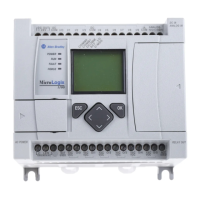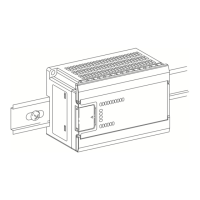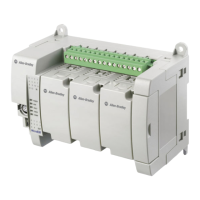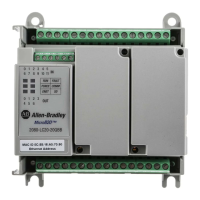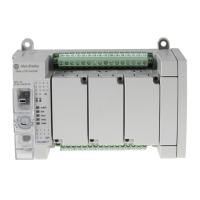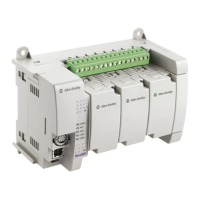14 Rockwell Automation Publication 1766-UM001I-EN-P - June 2015
Chapter 2 Install Your Controller
When you use the master control relay to remove power from the external I/O
circuits, power continues to be provided to the controller’s power supply so that
diagnostic indicators on the processor can still be observed.
The master control relay is not a substitute for a disconnect to the controller. It is
intended for any situation where the operator must quickly de-energize I/O
devices only. When inspecting or installing terminal connections, replacing
output fuses, or working on equipment within the enclosure, use the disconnect
to shut off power to the rest of the system.
Using Emergency-Stop Switches
When using emergency-stop switches, adhere to the following points:
• Do not program emergency-stop switches in the controller program. Any
emergency-stop switch should turn off all machine power by turning off
the master control relay.
• Observe all applicable local codes concerning the placement and labeling
of emergency-stop switches.
• Install emergency-stop switches and the master control relay in your
system. Make certain that relay contacts have a sufficient rating for your
application. Emergency-stop switches must be easy to reach.
• In the following illustration, input and output circuits are shown with
MCR protection. However, in most applications, only output circuits
require MCR protection.
The following illustrations show the Master Control Relay wired in a grounded
system.
Do not control the master control relay with the controller. Provide
the operator with the safety of a direct connection between an
emergency-stop switch and the master control relay.
In most applications input circuits do not require MCR protection;
however, if you need to remove power from all field devices, you must
include MCR contacts in series with input power wiring.
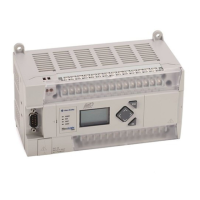
